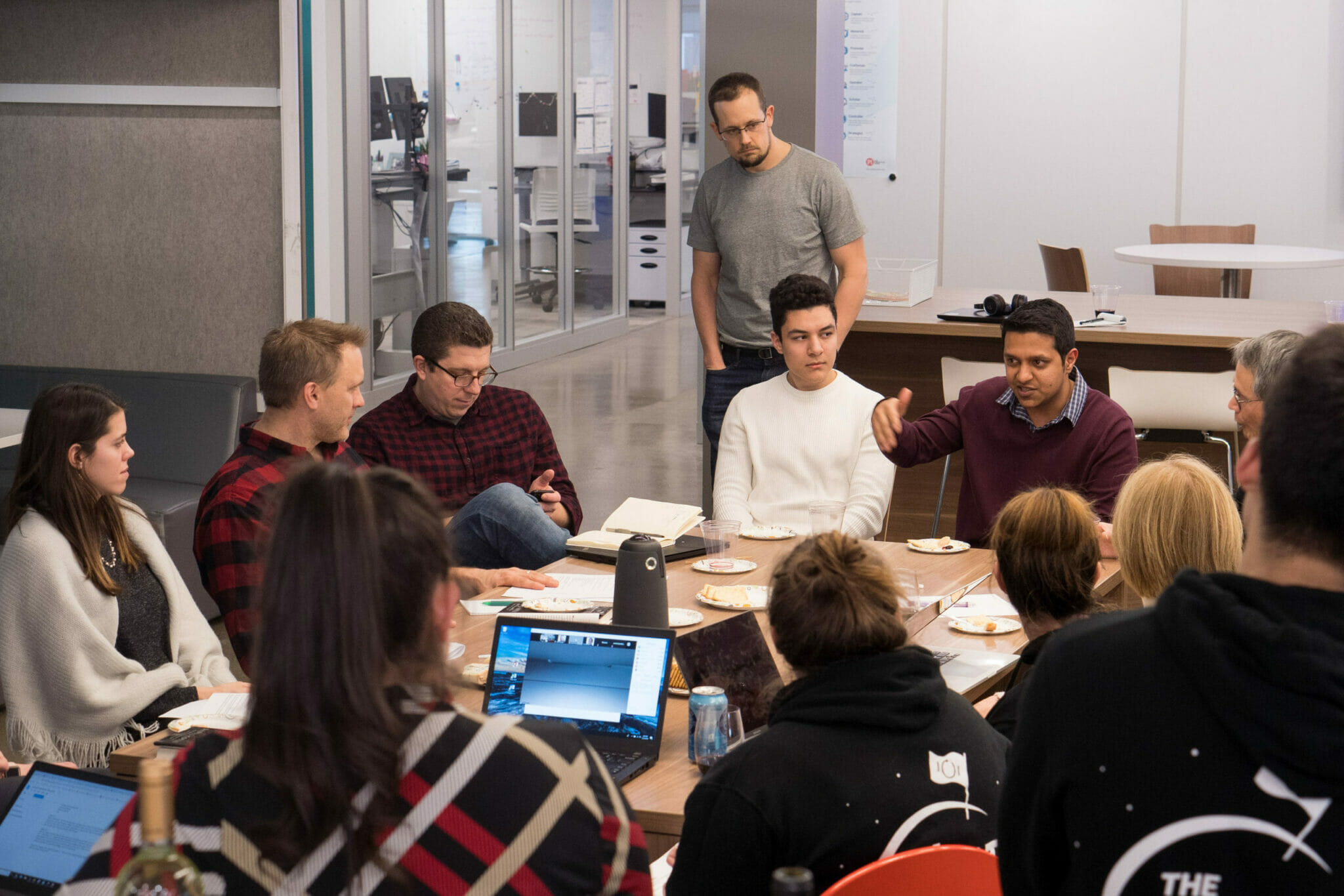As a people manager, supporting your employees’ personal and professional growth comes with the job.
But what does that look like? How can you do that on a practical level?
We connected with Rebecca Taylor, COO of GoCoach, a platform that connects employees at all levels with professional coaches to accelerate their careers, to get some insights.
Here are her top three tips for people managers:
1. Embrace a growth mindset.
“In one world, effort is a bad thing. It, like failure, means you’re not smart or talented. If you were, you wouldn’t need effort. In the other world, effort is what makes you smart or talented.” –Carol Dweck
The key to shifting perspective to a growth mindset is to encourage the work that goes into creating the result, rather than the result itself. If you focus on what’s been learned, what’s improved, and how that impacted the end result, individuals will begin to value growth mindset-oriented feedback.
Here are three tips you can use to encourage a growth mindset on your team:
Change the way you give feedback.
When giving feedback to someone on your team, focus on the areas where you’ve seen them focus on learning. Use phrases such as, “I was really impressed by the way you figured out how to solve that problem” or “I’ve seen a change in your approach that’s increasing your effectiveness in reaching X goal.”
Help them shift perspective.
Growth mindset is all about embracing the “yet.” You might not know how to do something yet, but you’re going to work at it until you can. When an employee needs a push in the right direction or needs help regaining confidence, help them put things in perspective by realizing they might not know how to do something yet, but they can put in the work to learn how to do it later.
Encourage curiosity.
The best way to foster a growth mindset is to encourage constant curiosity—especially when it comes to problem-solving. It’s easy to give an employee precise instructions, but when you encourage them to figure something out on their own, you help them build critical problem-solving skills they’ll use for years to come.
2. Build your EQ.
Emotional Intelligence (EQ) is critical to build and hone as a people manager. Simply put, EQ is the ability to understand and manage emotions—both yours and others’. When you understand how emotions impact someone’s experience at work, you can guide them in a more meaningful way.

Here are three things you can do to build your EQ:
Pause for a moment.
It’s easy to let emotions influence how we respond or react to a situation—even one at work. If you’re in a situation where you receive unwarranted feedback or you can’t understand why someone on your team is struggling to complete a basic task, take a beat and think about all of the factors that could be affecting the situation. Use this time to break down the thoughts and motivations behind what you’re seeing or behind. By taking this pause, you can better control your response, creating a safe space for that person to openly share their perspective or struggle.
Build empathy.
Besides controlling your own emotional reaction to a situation, it’s important to think about the emotions of those around you. The more you understand the world through someone else’s eyes, the more you’ll be able to influence engagement on your team and within your organization. Taking an empathetic lens to evaluate people data is often the difference between managing someone out of an organization and helping them truly thrive.
Reflect on your feelings.
Build your own emotional self-awareness by asking yourself the following questions:
- How do my emotions affect my perception of the situation?
- How does my reaction affect my team’s response to a challenge?
- Would this situation have turned out differently if I had a better pulse on the emotions involved—from both myself and the other person?
- What are my emotional strengths as a leader, and how can I apply these to further understand my company and my team?
3. Dig for the root cause.
People typically come looking for help solving a surface-level issue—whether that’s an email not getting through to a colleague before a big meeting or a project not being delivered on time because of miscommunication among the team. As a leader, it’s important to help them uncover the root cause of this issue and focus on solving for that. This is how they’ll see long-term success that makes a real impact.
Here are three ways you can help your employees get to the root of the issue:
Consider the context.
When an employee comes to you with a problem, consider the context. If you know your employee is stressed out and doesn’t handle stress well, that needs to play a role in your conversation. If your employee seems like they’re struggling to get on the same page as a teammate, use a tool such as a behavioral assessment to help them understand key differences that may be blocking them from successfully collaborating.
Take a bird’s-eye view.
Help your team get out of the weeds when they’re trying to work through blockers. Most of the time they don’t need help with the small tasks they’re working on; the real blocker is they can’t see the bigger picture of what they’re trying to accomplish. Support them in taking a step back to get a different perspective, then tie their objectives back to your company’s mission and vision.
Reinforce your company’s values.
Company values exist to help people establish the behaviors needed to successfully execute your business strategy within the context of their role. When someone is stuck, help them channel the company values in order to determine what the appropriate next steps are. For example, if accountability is a company value and your employee is having a tough time getting what they need from members of a project team, encourage them to implement an accountability exercise, such as standups or one-on-one touchpoints.
Join 10,000 companies solving the most complex people problems with PI.
Hire the right people, inspire their best work, design dream teams, and sustain engagement for the long haul.
Rebecca Taylor has 10 years of experience in talent acquisition, talent management training, and coaching. As GoCoach’s Chief Operating Officer, she designs and frames learning initiatives within organizations and helps clients leverage the personalized learning that coaching provides.








